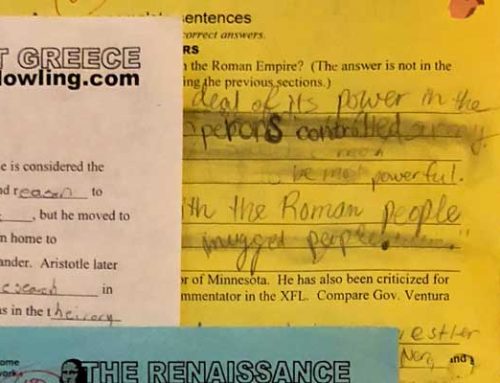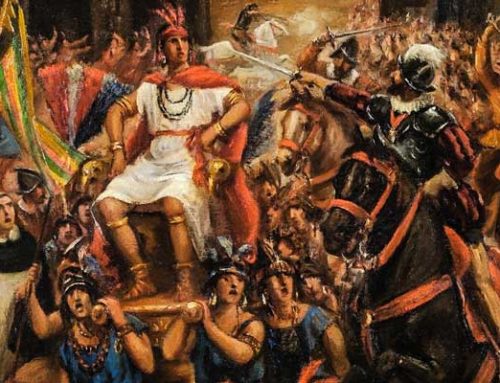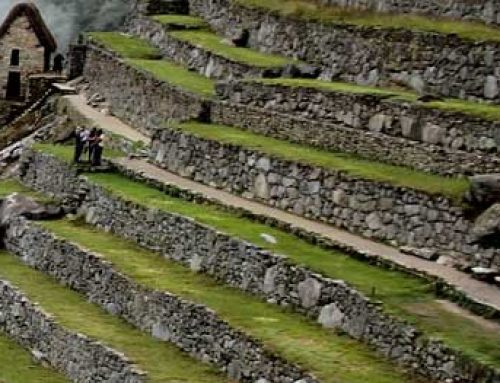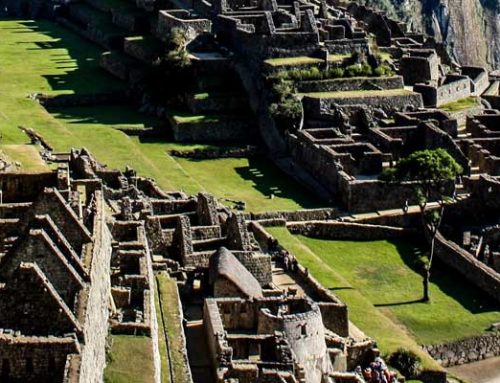Deep in the jungle of Mesoamerica, a group of Maya city-states flourished for over a millennium. The Maya constructed great temples to bloodthirsty gods, then mysteriously went into a period of decline not once but twice. Finally, by the time the Spanish arrived in 1517, little remained of the Maya beyond the legends and the clues they left behind for explorers to discover.
Archaeologists found evidence of Maya farming by about 400bce in the lowlands of what today is the southernmost part of Mexico, El Salvador, Belize, and eastern Honduras. The Maya cultivated squash, beans, potatoes, tomatoes, and cocoa, but corn was their primary food source and the reason the Maya population grew. Modern science indicates that over 70% of the ancient Maya diet came from corn.

Chichén_itzá
El Castillo (Spanish for "the castle"), dominates the center of the Chichén Itzá archaeological site.
The Maya believed that the gods created humans from dough made of corn and blood. To repay the gods, the Maya offered animal and human sacrifices. Maya inscriptions describe gruesome rituals that included priests removing victims’ hearts to satisfy the gods. Maya priests also cut themselves and sacrificed their blood to honor their gods.
The most honored god in the Maya pantheon was Chaac, who provided rain to the Maya farmers. There are few rivers in the region, so the Maya depended on Chaac’s kindness. Later Maya built huge cisterns to collect and store rainwater to provide citizens through months of drought.
Maya astronomers studied the heavens and kept careful records of their religious observances because the Maya believed sacrifices to the gods had to be carefully timed. The Maya used two calendars. An everyday calendar with 20 months of 13 days each was probably related to the appearance of the planet Venus. The Greeks and the Romans associated the planet Venus with the goddess of beauty, but the Maya seem to have associated Venus with war. The Maya also had a solar calendar that was like our own. Dates were so important that many Maya named their children for the date of their birth.
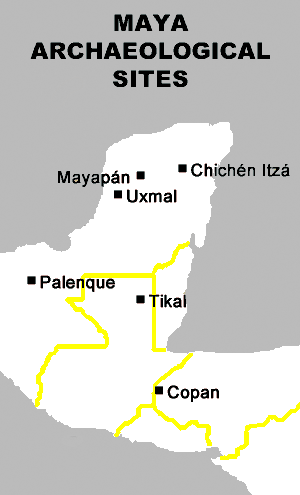
mayamap
A map of the primary archaeological sites of the Maya culture.
The Maya created their calendar using a sophisticated mathematical system. While our mathematics is based on the number ten – or ‘base ten’ — the Maya had a base twenty system. They represented one to four with dots. Five was a horizontal bar. Six to nine was a bar with dots above. Ten was represented by two horizontal bars. The Maya drew a shell to represent zero.
Numbers bigger than twenty were depicted as stacks of multiples of twenty raised to various powers. This flexible system allowed Maya mathematicians to calculate sums up to hundreds of millions.
The Maya were not a unified empire but a collection of city-states ruled by kings. The king and the priests who advised him taxed the farmers and craftsmen of their state, oversaw justice, administered nearby villages, and waged war.
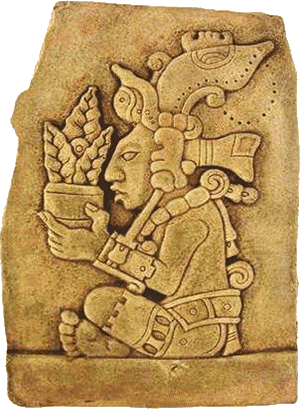
Corn-god
Yum Kaax was a god of wild plants and of animals.
The Maya created their calendar using a sophisticated mathematical system. While our mathematics is based on the number ten – or ‘base ten’ — the Maya had a base twenty system. They represented one to four with dots. Five was a horizontal bar. Six to nine was a bar with dots above. Ten was represented by two horizontal bars. The Maya drew a shell to represent zero.
Numbers bigger than twenty were depicted as stacks of multiples of twenty raised to various powers. This flexible system allowed Maya mathematicians to calculate sums up to hundreds of millions.
The Maya were not a unified empire but a collection of city-states ruled by kings. The king and the priests who advised him taxed the farmers and craftsmen of their state, oversaw justice, administered nearby villages, and waged war.
Resources
Download this lesson as Microsoft Word file or as an Adobe Acrobat file.
Lexile Measure 1080L
Mean Sentence Length 15.07
Mean Log Word Frequency 3.26
Word Count 663
Mr. Donn has an excellent website that includes a section on Native Americans.
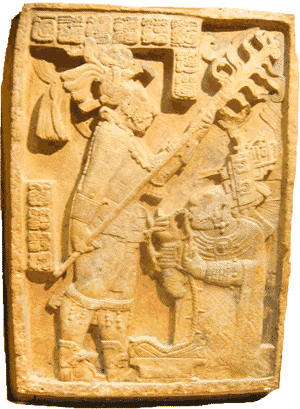
Maya_carving
This carving depicts a Maya ruler holding a torch while his queen pulls a studded rope studded her tongue. The carvings on the top left indicate the date as October 29, 709CE.

